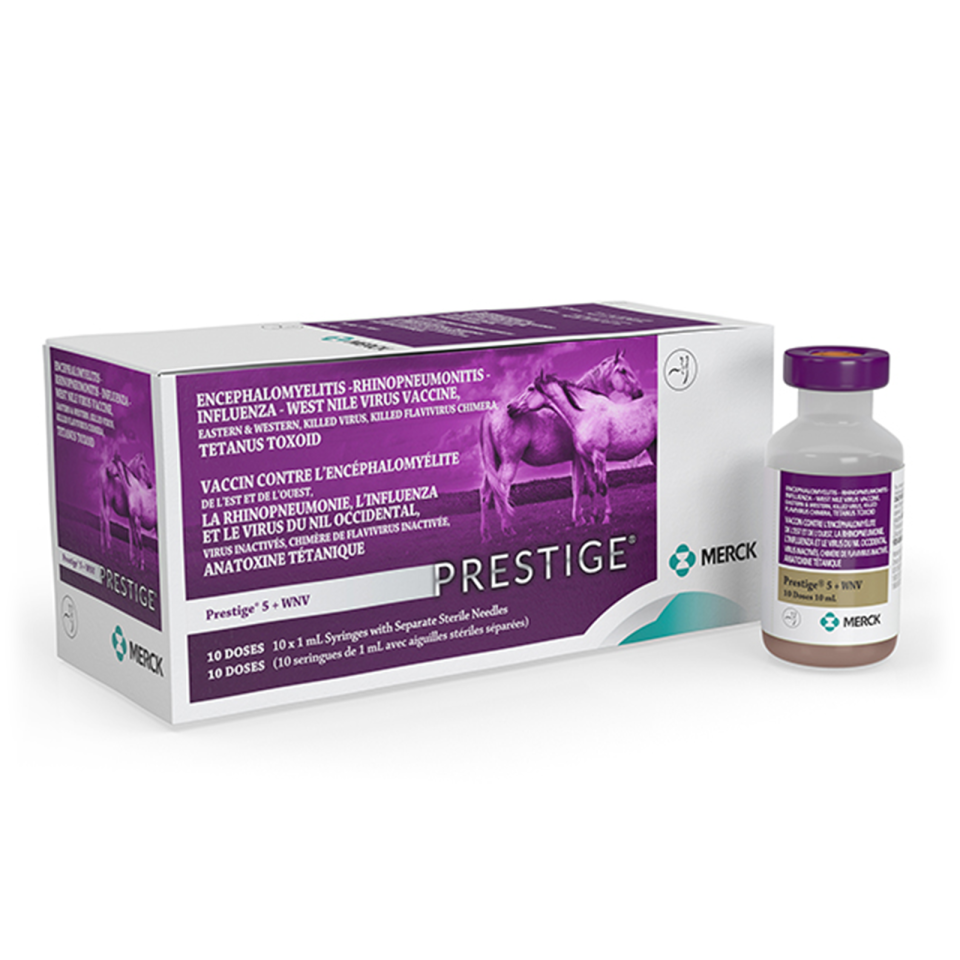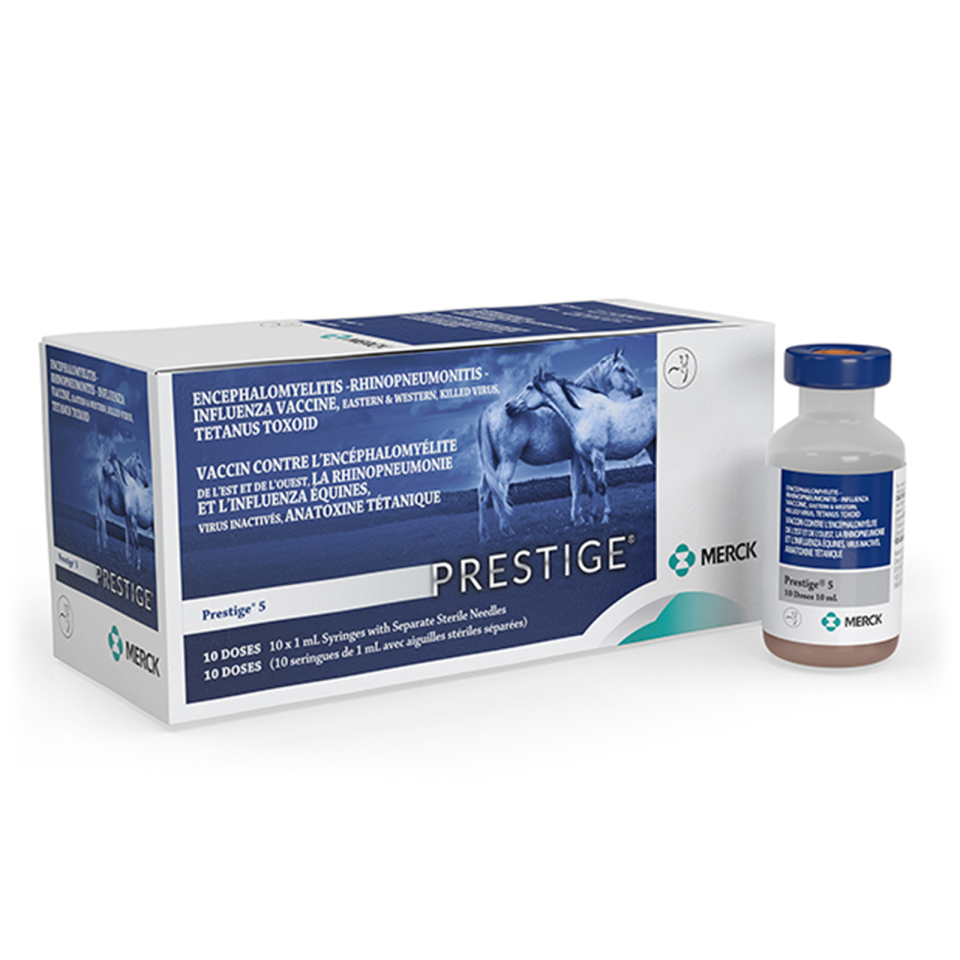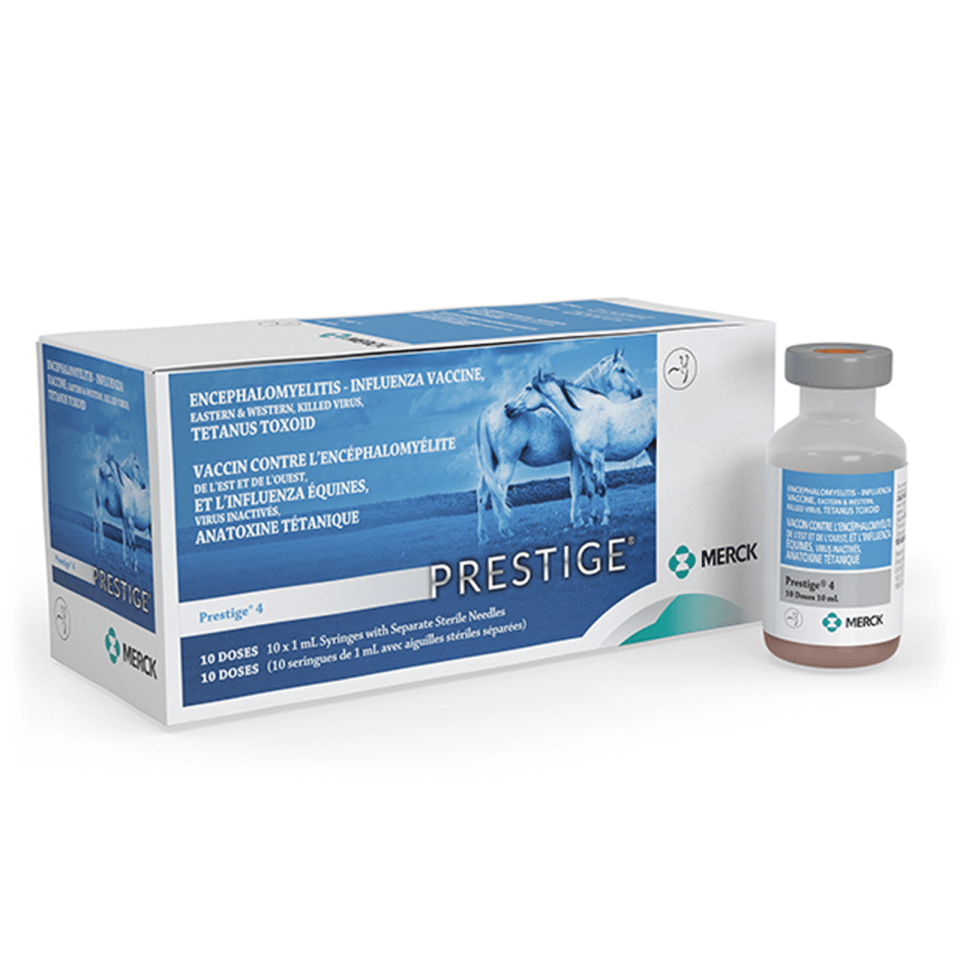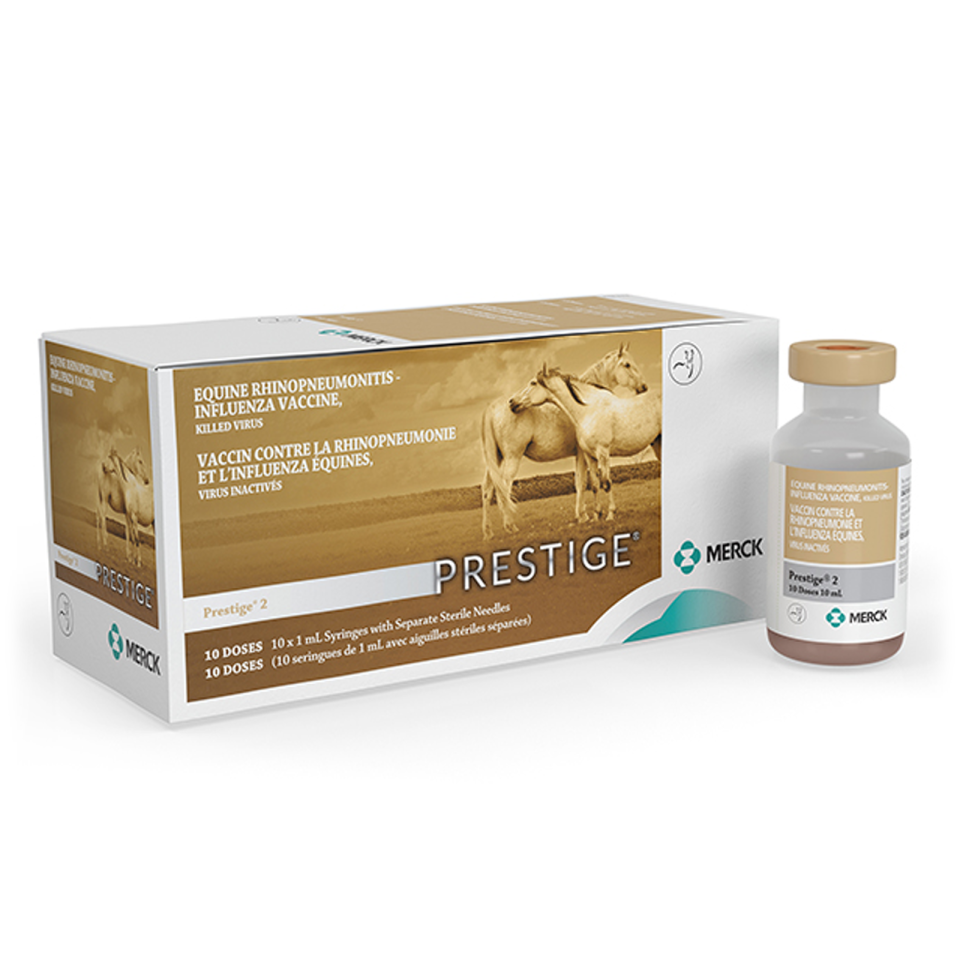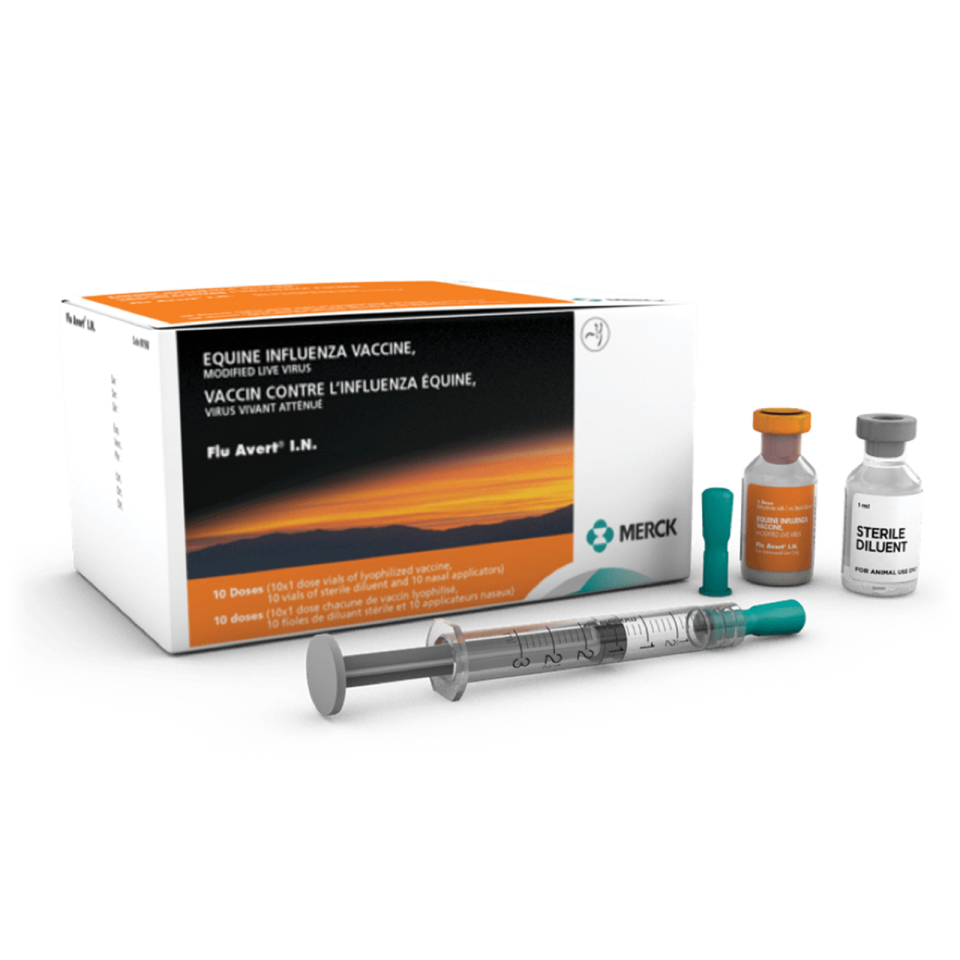
Equine Influenza (EIV)
Disease Overview
Equine influenza virus (EIV) is one of the most common and contagious infectious upper respiratory diseases in horses. Endemic in the United States equine population, EIV spreads rapidly, with clinical signs appearing 24 to 72 hours after exposure. A coughing horse can propel equine influenza virus more than 50 yards and shed virus for seven to 10 days following infection. The virus causes damage to the lining of the trachea so rest during the recovery period is beneficial to avoid secondary pneumonia.
Merck Animal Health Solutions
Transmission
EIV spreads directly in aerosolized droplets dispersed by coughing or direct contact (nose-to-nose). It spreads indirectly through fomite transmission—hands, clothing, vehicles and trailers, stalls, and common-use articles such as brushes, buckets and bits can all spread EIV.
Clinical Signs
Infection affects the central nervous system.
- Fever (>101.5° F)
- Edema
- Enlarged lymph nodes
- Frequent dry cough
- Nasal discharge
- Lethargy
- Lack of appetite
- Possible secondary bacterial pneumonia
Risk Factors
- Travel
- Contact with other horses, especially in large numbers
- Exposure to horses that have traveled
- Compromised or immature immune system
- Equine flu season typically peaks from December to April but disease can occur any time of year
References
“Equine Influenza,” American Association of Equine Practitioners, copyright 2020, aaep.org/guidelines/vaccination-guidelines/risk-based-vaccination-guidelines/equine-influenza.
“Equine Influenza Quick Facts,” Merck Animal Health, copyright 2020, www.merck-animal-health-equine.com/styles/images/programs/EIV_Infographic.pdf.
Infectious Upper Respiratory Disease Surveillance Program. Merck Animal Health and University of California, Davis, School of Veterinary Medicine (Nicola Pusterla). Ongoing research 2008-present.

